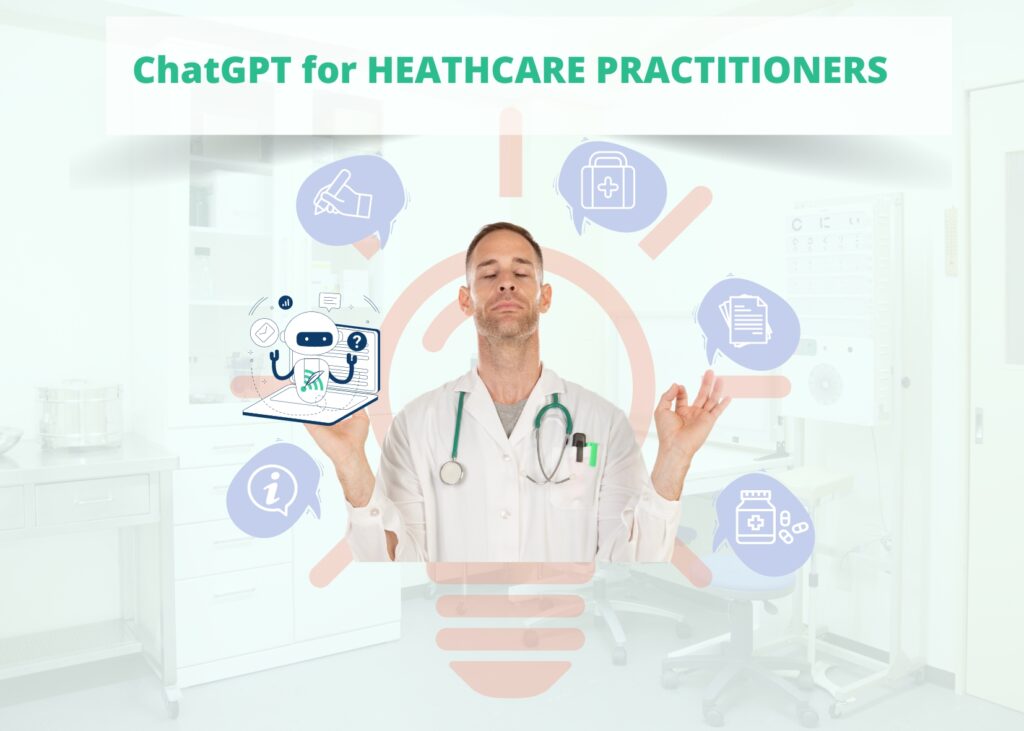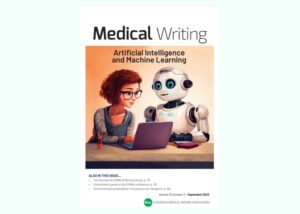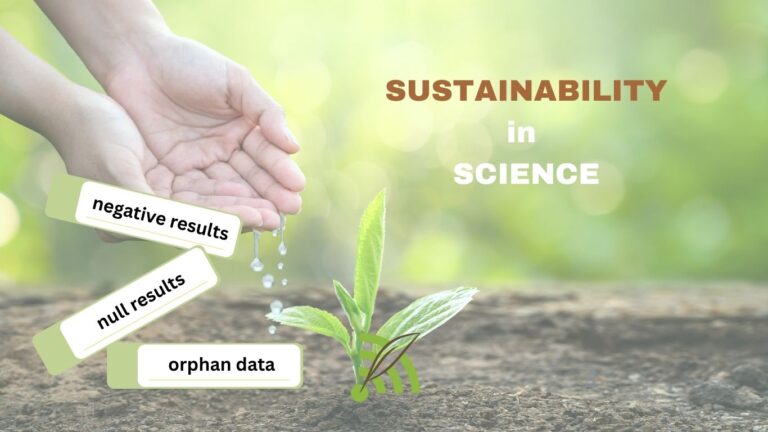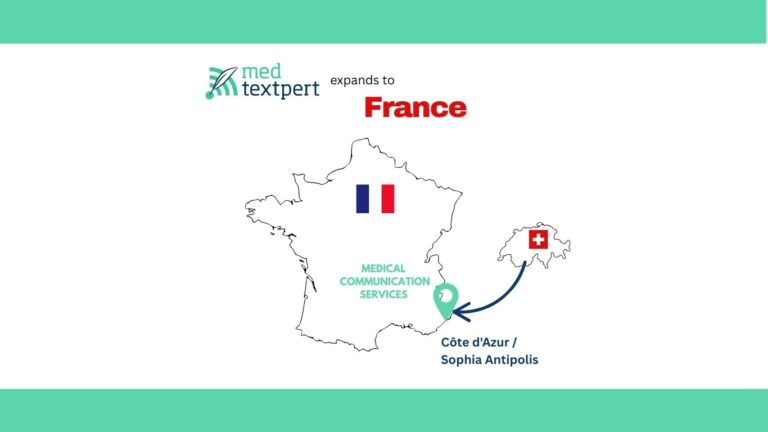ChatGPT and custom GPTs are widely known and used, offering numerous benefits for busy healthcare practitioners, from enhancing patient communication to streamlining administrative tasks and improving documentation. However, many professionals remain sceptical about using these tools professionally due to valid concerns about data confidentiality, possible inaccuracies, or simply unfamiliarity with generative AI.
This blog aims to provide an overview for those who are still hesitant or, more importantly, time-constrained, encouraging them to explore the capabilities of these tools beyond simple tasks.
Recognizing that the evolving medical landscape increasingly demands adopting advanced technologies to maintain competitive and effective practices is crucial. By not embracing these new tools, healthcare practitioners risk falling behind colleagues who do in today’s fast-paced digital world.
We’ll focus on ChatGPT (OpenAI) as a representative of Large Language Models (LLMs) for clarity, though it is worth noting that other systems, such as the Claude 3 family (Anthropic), with more recent training data, offer similar capabilities.
Let’s explore how ChatGPT or custom GPTs can assist you and your colleagues in daily practice when used responsibly while also addressing common concerns.
ChatGPT in Action: Examples of Practical Use Cases
1. Clinical Decision Support
This not only improves efficiency and reduces mistakes but also enhances the overall quality of patient care. Additionally, ChatGPT can serve as a valuable companion, offering second opinions and aiding in the reasoning process when diagnosing and treating patients.
2. Drug Information and Medication Management
ChatGPT can serve as a real-time resource for comprehensive medication management. It offers instant access to detailed drug information, including side effects, interactions, and contraindications, helping healthcare professionals make more informed prescribing decisions. Specifically, it can:
- Provide guidance on proper drug usage and suggest alternatives for patients with allergies or intolerances.
- Perform checks for potential medication interactions or side effects, especially in cases of polymedication.
- Assist in discovering medication discrepancies in progress notes.
By leveraging ChatGPT for these purposes, healthcare providers can enhance patient safety and optimize medication management. However, it’s crucial not to overly rely on these tools; professional judgment and up-to-date clinical guidelines should always take precedence.
3. Enhancing Doctor-Patient Communication
Explanation of Disease/Symptoms in a Patient-Comprehensible Manner
Clear communication is crucial when diagnosing a patient with a new condition. ChatGPT can help bridge the gap between complex medical terminology and patient understanding, ensuring individuals grasp the essentials of their health situation in a comprehensible language and format to retain.
Creation of Fact Sheets to Facilitate Informed Decision-Making
Verbal explanations often aren’t enough—patients can forget or misunderstand critical information. ChatGPT can generate personalized, accurate, and easy-to-understand fact sheets to provide patients with credible information, reducing the risk of misinformation from unreliable online sources.
Explanation of Treatment Plans, After-Care Instructions, and Lifestyle Changes
Patients need to understand their treatment plans, after-care instructions, and necessary lifestyle changes. ChatGPT can help generate detailed explanations that ensure patients are well-informed, engaged and follow their healthcare provider’s recommendations effectively.
ChatGPT as Translator
ChatGPT can overcome language barriers and facilitate the exchange with patients who do not speak the local language. It can reduce costs associated with providing interpreters, translation, and other language-related services, ultimately leading to better care.
4. Automating Repetitive Tasks
Routine administrative tasks, such as scheduling appointments and sending reminders, can consume a significant portion of your time. ChatGPT can help handle these tasks efficiently (if not automated already) allowing you to focus on patient care and improving practice efficiency.
Physician and Referral Letters
Writing professional notes and letters, whether for health records or referrals, can be tedious. ChatGPT / custom GPTs can help draft these communications or let you save «blurbs» (standard phrases) for reuse, quickly and accurately, freeing up your time for more critical tasks.
Frequently Asked Questions Creation and Needs-Based Adaptation
Patients often have many questions that need consistent, accurate answers. ChatGPT can generate and adapt FAQs based on common inquiries, providing reliable information. Answers can easily be adapted to reflect personalized treatment requirements and to reassure patients according to their individual information needs and capabilities to comprehend.
5. Enhancing medical documentation efficiency
Medical Records for Various Stages of Patient Care
Accurate documentation is crucial in healthcare. ChatGPT can assist in documenting patient symptoms and history; it can help monitor response to treatment by summarizing changes since the last visit. It can suggest adaptations to treatment plans and help finalize end-of-treatment records in a structured way. This ensures your documentation is consistent, thorough, and ready for billing.
Insurance, Billing, and Coding
Navigating insurance, billing, and coding can be complex and really time-consuming. ChatGPT can streamline these processes by helping to generate the necessary documentation and ensuring accuracy, ultimately facilitating a smoother exchange and reducing errors whilst freeing up a lot of valuable care time.
6. Optimizing Communication Channels
Email Communication with Patients and Healthcare Stakeholders
Efficient communication with patients and other healthcare stakeholders is vital. ChatGPT can draft professional and patient-friendly emails, adjusting the tone as needed, ensuring clear and effective communication.
Website and social media
ChatGPT is great in helping you draft and adapt your website copy (even SEO optimized) and announcements or content for your social media channels. In general, there are lots of AI tools suited to uplift our content marketing, like Jasper, Writesonic and CopyAI, to name a few.
7. Standardizing Practice Procedures and Training Programs
Standard Operating Procedures (SOPs)
Creating and maintaining Standard Operating Procedures (SOPs) ensures consistency and quality in healthcare practice. ChatGPT can help generate and update SOPs, making sure that all procedures are well-documented and easily accessible.
“How to” Manuals
Training new employees can be resource-intensive. ChatGPT can assist in creating detailed “how-to” manuals, providing new staff with comprehensive guides to your practice’s processes, and easing the onboarding process.
7. Integrating with Virtual Assistants
Enhancing Virtual Assistant Capabilities
ChatGPT can be integrated into virtual assistants to enhance their capabilities, providing patients with real-time information and support, and assisting healthcare providers with on-the-go access to information and task management.
8. Supporting Clinical and Translational Research
Assisting in Research and Documentation
ChatGPT can assist with clinical research by summarizing medical literature, analyzing data, and generating reports or other documents. Well-established genAI tools such as Litmaps, Paperpal, Perplexity or Grammarly can hugely accelerate research activities, though human oversight remains essential to ensure accuracy and relevance.
Medical and Scientific Writing
Learn how generative AI tools can enhance your research writing processes and find suitable tools for a variety of tasks in this recent issue of Medical Writing (EMWA).
Specific Examples of ChatGPT in Action
Following are two simple, practical examples of using ChatGPT in your daily work.
Creating Patient Education Fact Sheets
Scenario: A patient is diagnosed with Type 2 diabetes and needs to understand the implications, treatment options, and necessary lifestyle changes.
Steps:
- Prompt ChatGPT:
- Use a prompt like: “Generate a patient information fact sheet explaining Type 2 diabetes, including symptoms. Explain treatment options, recommend lifestyle adjustments, and elaborate on long-term management. Add medical consequences for patients who fail to adhere to the treatment.”
- Customize the Prompt:
- Include detailed instructions to tailor the fact sheet to the patient’s specifics, such as their educational level and preferences for the form, style, and length of the document.
- Review and Refine:
- Examine the generated content for accuracy and quality. Customize it as needed, iterating to ensure the information is clear, comprehensive, and patient-friendly.
By using ChatGPT in this manner, you can quickly produce informative and personalized patient education materials, helping patients better understand and manage their conditions.

Answering Patient FAQs
Scenario: After a hip transplant, patients frequently ask about post-surgery care, recovery periods, expected mobility, and the overall impact on quality of life.
Steps:
- Create a Set of Questions:
- Compile a list of common questions that patients typically ask about post-surgery care and recovery for a hip transplant.
- Prompt ChatGPT:
- Use a prompt like: “Provide clear answers to 10 FAQs about post-surgery care and recovery for a hip transplant. Add a section that outlines expected mobility and quality of life.”
- Review and Refine:
- Examine the generated content for accuracy and quality. Customize it as needed, iterating to ensure the information is precise and helpful.
- Disseminate the Information:
- Make the generated FAQs available on your website, provide them directly to patients as fact sheets, or make them downloadable via a QR code.
Although these examples are simple, they offer a glimpse into how you can start integrating ChatGPT into your workflows.
Now, let’s explore custom GPTs and how they can be effectively integrated.
Custom GPTs: From Creation to Integration
Have you ever wondered about custom GPTs?
Here is a short explanation: “Custom GPTs are tailored versions of GPT models designed to meet your practice’s specific needs. They are trained on your speciality’s terminology, data, and protocols, ensuring more specific responses that align with practice-specific medical and operational needs“.
An outline, how you can create, run, and integrate them:
- Define Specifics: Identify your unique needs, such as specialized terminology or specific documentation formats.
- Build Your GPT: Use OpenAI’s GPT builder to create your custom model. Select a base GPT, define its purpose, and provide specific instructions and knowledge, such as medical literature, privacy-adherent anonymous patient records, and other specialized medical content. You can even upload relevant documents to enhance its training data.
- Test and Refine: Test run your GPT using various scenarios to check the accuracy of the output. Based on the results, adjust as needed.
- Deploy and Integrate: Once satisfied, deploy your custom GPT. Integrate it with your existing systems, ensuring compatibility with your practice software. Collaborate with AI and IT experts for integration and training.
- Train Your Team: Introduce your staff to the new tool and provide guidelines on its use and limitations.
Remember, building a custom GPT is an iterative process. Regular updates and refinements based on user feedback will help maintain its relevance and effectiveness.
Integrating custom GPTs into your practice could offer a valuable support system, augmenting operational efficiency and clinical decision-making while maintaining the highest standards of patient care. You’re not just adopting AI – you’re adapting it to work smarter for you and your patients. And we are here to help with our service offering in responsible AI.
Concerns about using LLMs like ChatGPT in Private Practice
The integration of Large Language Models (LLMs) into private healthcare practice has sparked both excitement and apprehension.
Despite its potential, adopting ChatGPT in private practice presents several challenges. Data privacy and security are paramount concerns, as the effectiveness of ChatGPT relies on large datasets, raising issues about the protection of patient information. Ensuring compliance with regulations such as GDPR is essential to safeguard patient data and privacy. Additionally, while ChatGPT is advanced, it may struggle with medical jargon and regional dialects, potentially affecting the accuracy of clinical decision support. Ethical considerations also arise, with some practitioners fearing that AI might undermine their roles or compromise the quality of care. Furthermore, the traditional resistance to new technologies in the healthcare sector, can hinder the adoption of ChatGPT.
While concerns exist, generative AI (genAI) tools such as ChatGPT can be invaluable allies when implemented wisely. To maximize their benefits, private practitioners should:
- Use AI as Assistants, Not Substitutes: Support, don’t replace, your professional expertise.
- Protect Patient Data: Implement stringent security measures.
- Align with Ethical Standards: Comply with ethical guidelines.
- Monitor and Adjust: Continuously evaluate AI performance and impact.
- Maintain Transparency: Clearly communicate AI involvement.
Additionally, observe the regulatory landscape and legal frameworks, such as the EU AI Act.

ChatGPT can be an invaluable tool for information retrieval and learning, but it’s essential to approach it with a discerning mind. Being critical and cautious is crucial. By following these principles, ChatGPT can improve efficiency and doctor-patient interactions, complementing rather than replacing critical thinking or professional judgment.
A MUST - Always Maintain Data Privacy

Strict data privacy policies are crucial in private practice. Avoid entering personally identifiable information —such as a patient’s name, birthday, address, place of employment, etc.— into non-secure platforms like ChatGPT to ensure data security and maintain patient trust.
Embrace the Future of Healthcare with Confidence
LLMs such as ChatGPT or Claude 3.5 offer a wide range of potential applications in healthcare settings to improve patient communication, streamline workflows, or enhance clinical documentation. By addressing confidentiality concerns and leveraging the power of well-crafted prompts, healthcare practitioners can unlock the full potential of genAI tools, leading to better patient outcomes and more efficient practice management.
Ready to transform your healthcare practice? Integrate and master ChatGPT (and other tools) into your practice, and you’ll experience increased efficiency in your workflows and communication.
Embrace the future, address your concerns, and experience a smarter, more efficient approach to patient care.
Do you lack time? Medtextpert is here to help. We offer customized, hands-on workshops for you and your team. Contact us today!
Further Reading:
[1] https://www.ncbi.nlm.nih.gov/pmc/articles/PMC10959013/
[2] https://www.aerzteblatt.de/nachrichten/150328/ChatGPT-schreibt-Arztbriefe-zehnmal-schneller
[3] https://aicontentfy.com/en/blog/chatgpt-in-healthcare-enhancing-diagnostics-and-communication
[5] https://aicontentfy.com/en/blog/chatgpt-in-healthcare-improving-patient-outcomes
[6] https://aicontentfy.com/en/blog/chatgpt-in-healthcare-improving-patient-communication
Acknowledgement:
I used ChatGPT and Claude 3.5 to help rephrase some passages. I reviewed the AI-generated text thoroughly, edited it as needed and take full responsibility for the content.





